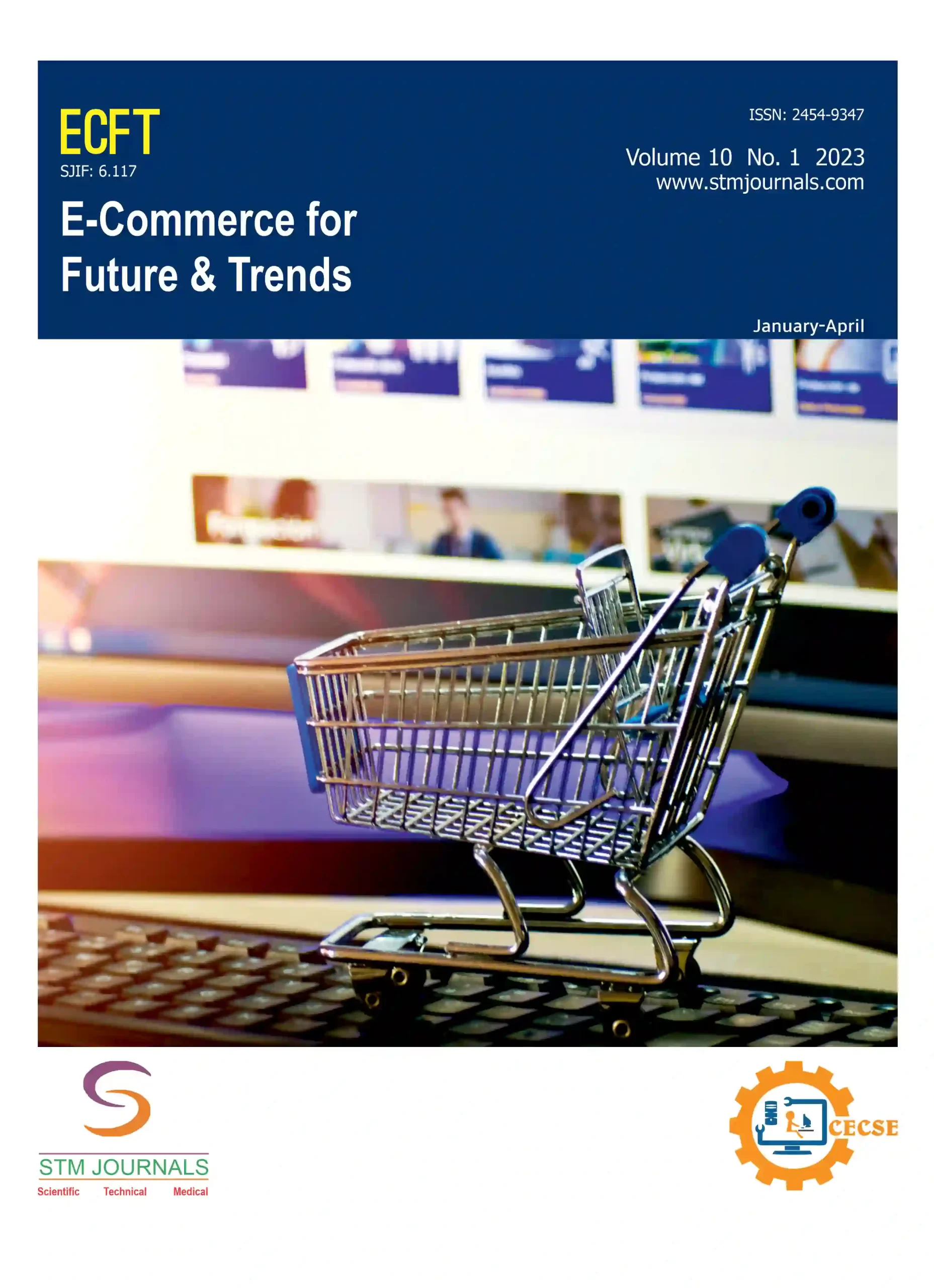Open Access

Manas Kumar Yogi,

Yamuna Mundru,

Siva Satya Prasad Pennada,
- Assistant Professor Pragati Engineering College (A) Surampalem Andhra Pradesh
Abstract
In this study, we propose a novel consensus algorithm to preserve the security and privacy of a transaction. We propose a Proof-of-Minimum Privacy Leak consensus strategy. This means that the competing nodes which participate in the competition to mine the next block should give a proof of minimum privacy leak during its transaction. Only this proof will give highest votes to that node, and it will be elected as the leader. The minimum privacy leak of a node participating in a Blockchain depends on various factors intrinsic to the Blockchain application. For example, if the application is related to healthcare, it will be related to the sensitive data of a patient, if it is a banking application, it will be related to monetary aspects of the account holder, etc. For our study, we apply the proposed approach to a smart voting system where Blockchain is deployed. Here, the participants’ details during voting are private data and there are provisions to reduce the voter privacy so that the participants of the smart voting system gain trust in the system rather than doubting that their privacy will be preserved or not. Our proposed mechanism performs better than recent popular consensus algorithms as shown in the experimental result. The results are displayed in terms of improved scalability, reliability and degree of increased trust.
Keywords: Blockchain, consensus, ledger, distributed, privacy
References
1. Weide Cai, Lian Yu, Rong Wang, Na Liu, Enyan Deng. Research on application system development method based on Blockchain. J Softw. 2017; 28(06): 1474–1487.
2. Wang W, Hoang DT, Xiong Z, et al. A survey on consensus mechanisms and mining management in Blockchain networks. IEEE Access. 2019; 7: 22328–22370.
3. Pilkington M. Blockchain Technology: Principles and Applications. NY, USA: Social Science Electronic Publishing; 2016.
4. Qifeng Shao, Cheqing Jin, Zhao Zhang, Weining Qian, Aoying Zhou. Blockchain: Architecture and Research Progress. Journal of Computer Science. 2018.
5. Dorri A, Steger M, Kanhere SS, Jurdak R. Blockchain: A distributed solution to automotive security and privacy. IEEE Commun Mag. 2017; 55(12): 119–125.
6. Sankar LS, Sindhu M, Sethumadhavan M. Survey of consensus protocols on Blockchain applications. 2017 4th International Conference on Advanced Computing and Communication Systems (ICACCS), Coimbatore. 2017; 1–5.
7. Rihong Wang, Lifeng Zhang, Quanqing Xu, Hang Zhou. A Byzantine fault-tolerant consensus algorithm that can be applied to alliance chains. Computer Application Research. 2020; 1–6.
8. Zhao W. Application-Aware Byzantine Fault Tolerance. 2014 IEEE 12th International Conference on Dependable, Autonomic and Secure Computing, Dalian. 2014; 45–50. doi: 10.1109/DASC.2014.17.
9. Veronese GS, Correia M, Bessani AN, Lung LC, Verissimo P. Efficient Byzantine FaultTolerance. IEEE Trans Comput. 2013 Jan; 62(1): 16–30. doi: 10.1109/TC.2011.221.
10. Bracha G, Toueg S. Asynchronous Consensus and Broadcast Protocols. J ACM. 1985 Oct; 32(4): 824–840.
11. Castro M, Liskov B. Practical Byzantine fault tolerance. Proceedings of the 3rd Symposium on Operating Systems Design and Implementation (OSDI), New Orleans, USA. 1999 Feb; 173–186.
12. Gervais A, et al. On the Security and Performance of Proof of Work Blockchains. In Proceedings of the 2016 ACM SIGSAC Conference on Computer and Communications Security, Vienna, Austria. 2016 Oct 24–28; 3–16.
13. Hou R, et al. Research on secure transmission and storage of energy IoT information based on Blockchain. Peer Netw Appl. 2020; 13(11): 1225–1235.
14. Abuidris Y, Kumar R, Yang T, Onginjo J. Secure large‐scale E‐voting system based on blockchain contract using a hybrid consensus model combined with sharding. ETRI J. 2021; 43(2): 357–370.
15. Gorog C, Boult TE. Blockchain Synchronous Trust Consensus Model. arXiv preprint arXiv:2112.03692. 2021.
16. Khan D, Jung LT, Hashmani MA. Systematic Literature Review of Challenges in Blockchain Scalability. Appl Sci. 2021; 11(20): 9372.
17. Jiang N, Bai F, Huang L, An Z, Shen T. Reputation-Driven Dynamic Node Consensus and Reliability Sharding Model in IoT Blockchain. Algorithms. 2022; 15(2): 28.
18. Joshi S. Feasibility of Proof of Authority as a Consensus Protocol Model. arXiv preprint arXiv:2109.02480. 2021.
19. Kudva S, Badsha S, Sengupta S, Khalil I, Zomaya A. Towards secure and practical consensus for blockchain based VANET. Inf Sci. 2021; 545: 170–187.
20. Xuan S, Chen Z, Chung I, Tan H, Man D, Du X, Guizani M. ECBCM: a prestige‐based edge computing blockchain security consensus model. Trans Emerg Telecommun Technol. 2021; 32(6): e4015.
21. Singh S, Hosen AS, Yoon B. Blockchain security attacks, challenges, and solutions for the future distributed iot network. IEEE Access. 2021; 9: 13938–13959.
22. Cachin C, Vukolić M. Blockchain consensus protocols in the wild. arXiv preprint arXiv:1707.01873. 2017.
23. Zhang S, Lee JH. Analysis of the main consensus protocols of blockchain. ICT express. 2020; 6(2): 93–97.
24. Kaur M, Khan MZ, Gupta S, Noorwali A, Chakraborty C, Pani SK. Mbcp: Performance analysis of large scale mainstream blockchain consensus protocols. IEEE Access. 2021; 9: 80931–80944.
25. Yu B, Liu J, Nepal S, Yu J, Rimba P. Proof-of-QoS: QoS based blockchain consensus protocol. Comput Secur. 2019; 87: 101580.

E-Commerce for Future & Trends
| Volume | |
| Received | April 12, 2022 |
| Accepted | April 25, 2022 |
| Published | January 30, 2023 |

